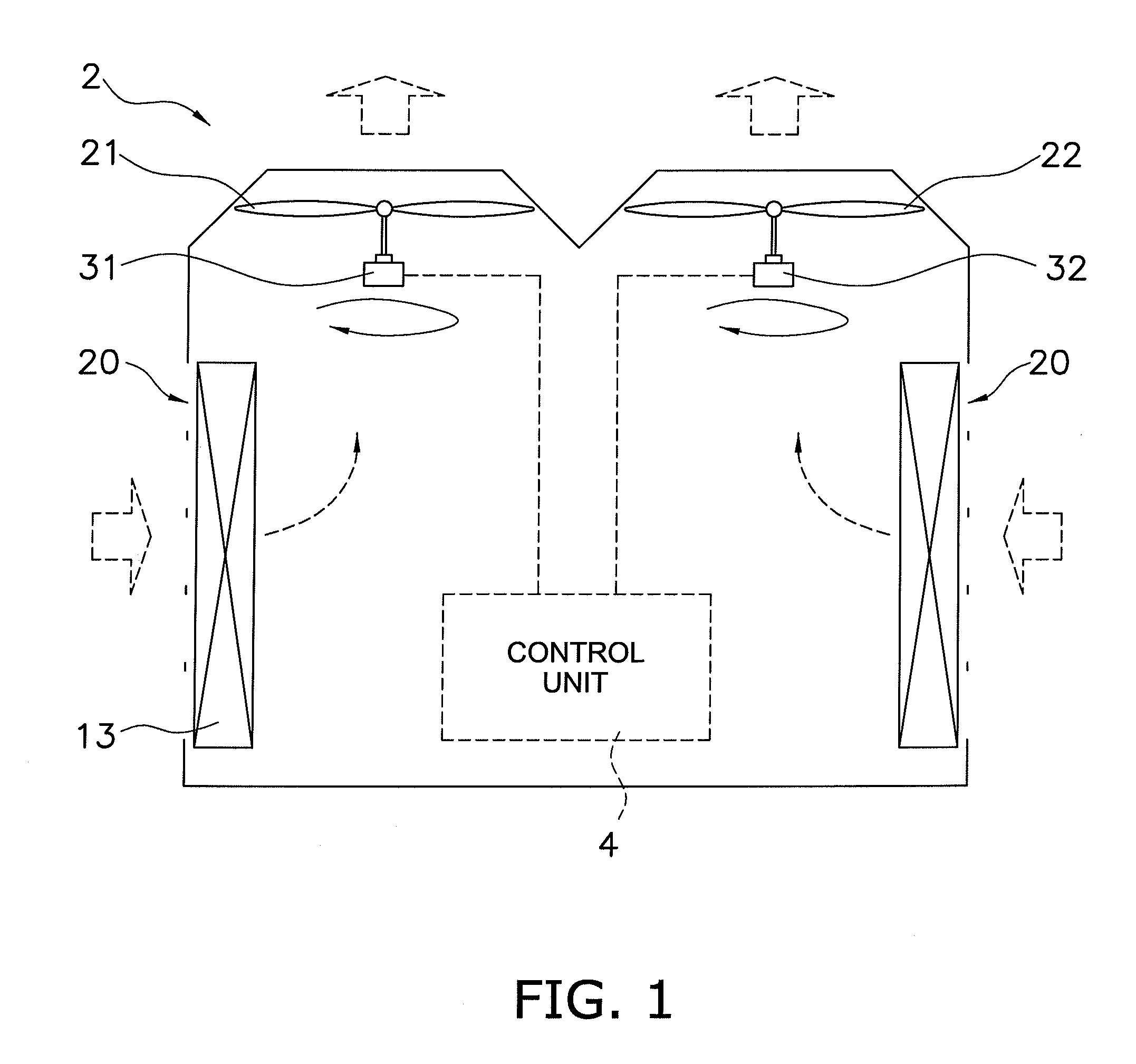Fan control system
a control system and fan technology, applied in computer control, temperatue control, dynamo-electric motor/converter starters, etc., can solve problems such as abnormal stopping of motors, and achieve the effects of suppressing pressure, reducing dynamic pressure, and keeping the rotational speed of fans low
- Summary
- Abstract
- Description
- Claims
- Application Information
AI Technical Summary
Benefits of technology
Problems solved by technology
Method used
Image
Examples
first modified example
[0057]A plurality of target rotational speeds (e.g., first target rotational speeds C1, C2) may be provided for each of the fans, that is, the first fan 21 and the second fan 22, such that the numerical values of the second target rotational speeds B1, B2 are larger than those of the first target rotational speeds C1, C2. Raising the rotational speed in steps in turn raises the dynamic pressure on the suction side in steps, which reduces the impact on adjacent fans.
second modified example
(Start-Up Limiting Rotational Speed)
[0058]In a case wherein a plurality of fans exist within the same air passageway, when the rotational speed of one of the fans reaches the prescribed rotational speed, the adjacent fans sometimes rotate in reverse owing to the dynamic pressure on the suction side. Here, when a fan operates in the state wherein it is rotating in reverse, there is a risk that a protective function will trip owing to an overload, an overcurrent, and the like, causing the fan to stop operating; therefore, it is preferable that the fan does not rotate in reverse prior to start-up or during operation. In the second modified example, when the first fan 21 is started up in the state wherein both the first fan 21 and the second fan 22 are at rest and then its rotational speed is increased, the rotational speed when the second fan 22 starts to rotate in reverse owing to the dynamic pressure on the suction side of the first fan 21 is stored in the memory of the microcomputer...
third modified example
(Startup Limiting Rotational Speed)
[0062]In a case wherein a plurality of fans exist within the same air passageway, when the rotational speed of one of the fans reaches the prescribed rotational speed, the protection function of the adjacent fans subject to dynamic pressure on the suction side may trip owing to an overload, an overcurrent, and the like, which makes those fans no longer able to start up or accelerate. To prevent such a situation, in the third modified example, when the first fan 21 is started up in the state wherein both the first fan 21 and the second fan 22 are at rest and then its rotational speed is increased, the rotational speed when the second fan 22 can no longer start up owing to the dynamic pressure on the suction side of the first fan 21 is stored in the memory of the microcomputer 40 as a first start-up limiting rotational speed. When the microcomputer 40 increases the rotational speed of the first fan 21, the first motor 31 is energized such that the va...
PUM
 Login to View More
Login to View More Abstract
Description
Claims
Application Information
 Login to View More
Login to View More - R&D
- Intellectual Property
- Life Sciences
- Materials
- Tech Scout
- Unparalleled Data Quality
- Higher Quality Content
- 60% Fewer Hallucinations
Browse by: Latest US Patents, China's latest patents, Technical Efficacy Thesaurus, Application Domain, Technology Topic, Popular Technical Reports.
© 2025 PatSnap. All rights reserved.Legal|Privacy policy|Modern Slavery Act Transparency Statement|Sitemap|About US| Contact US: help@patsnap.com



